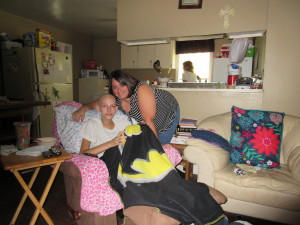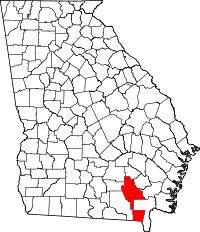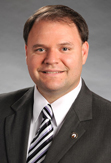State public health officials said Monday that based on their initial analysis, unusual childhood cancer cases in the Waycross area do not constitute a cancer cluster.
Relatives and community members in the southeast corner of Georgia have reported three childhood sarcoma cases in Ware County and one in a neighboring county that were diagnosed within two months of one another this summer.
The cancers revived fears in the community that there is a connection to where they live, and raised fears of a link to industrial contamination in the Waycross area. (Here’s a link to a recent GHN story on the cancers.)
Cherie Drenzek, the state epidemiologist, said in a conference call with community members Monday that the four cases were confirmed as cancers, but that because they were in different counties, they were not geographically clustered together.
“None of the four cancers have known environmental causes,’’ Drenzek said, adding that not all four were the same type of cancer. One of them, Drenzek added, was diagnosed a year ago.
But Public Health’s explanation did little to ease concerns of people in the greater Waycross area, who have called for more testing of the water, soil and air in the area for possible pollutants.
“I am so disappointed that they would continue to allow these children to get sick,’’ said Joan Tibor after the call. Tibor, who has helped compile data on cancer among local children, also questioned the accuracy of the state’s information as it was presented.
Drenzek of Public Health said two of the four had rhabdomyosarcoma, an extremely rare cancer, instead of three, as was reported by community and family members. A third had Ewing sarcoma, and the fourth a brain sarcoma, Drenzek said.
Tibor, however, insisted that three of the children have rhabdomyosarcoma, according to their family members.
There are only 350 new cases of rhabdomyosarcoma each year in the United States, according to the American Cancer Society. The annual incidence of Ewing sarcoma is one case per every 1 million Americans, though the figure is somewhat higher for children, according to the National Cancer Institute.

A cancer cluster is defined as a greater-than-expected number of cancer cases that occur within a group of people in a geographic area over a period of time. Such clusters are very difficult to prove.
Each case must either be the same type, or derived from the same cause.
One problem with establishing direct causation is that cancer is all too common. As the CDC points out, it is the second-leading cause of death in the United States. Nationwide, one out of four deaths are due to some type of cancer.
Public Health spokesman Shawn Ryan noted Monday that the state was not ruling out a cancer cluster in this instance, but simply saying that it could not verify one based on current data. And Ryan added that the state is seeking more information from the community.
Some people with cancer in the Waycross area were actually diagnosed and treated in nearby Florida, and thus they were not initially included in the Georgia Comprehensive Cancer Registry, Public Health officials acknowledged.
State Rep. Jason Spencer (R-Woodbine), whose district includes Ware County, said Monday after the call that he was not satisfied with public health officials’ evaluation of the situation.
“It raised more questions than answers,’’ said Spencer, a physician assistant. All four cancers are not the same, but are similar, he added. “I’m not a cancer expert. What I do know is these sarcomas are similar in cellular structure.”
Jane Perry, director of the chemical hazards program at Public Health, said the agency would continue to urge South Georgia residents to test their well water for contamination.
“There’s a lot of questions out there and a lot of concerns,” Perry said at the conclusion of the conference call.


